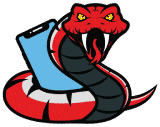Stegosaurus
The Stegosaurus is a herbivorous dinosaur that roamed the Earth during the Late Jurassic period. Known for its distinctive bony plates, the Stegosaurus was a formidable creature. Despite its size, this dinosaur had a relatively small brain and is believed to have been a slow-moving animal. Excavations have revealed many fossils of this fascinating creature, allowing scientists to learn more about its behavior and evolution over time.
